They may have heard the term before but many diesel owners don’t often understand their function. Most make the assumption that it has something to do with the injectors, but they really don’t inquire to know exactly what it means. Some have never heard the term or even know that the injector cups exist.
As engine parts go, they’re not very big – but sometimes it’s the little things that cause the big problems. Having problems with injector cups is something that you may never encounter. This is something, however, you may want to consider if your diesel engine customers are racking up the miles or getting a rebuild.
The cylinder heads of diesel engines may be cast iron or aluminum. The injector itself often has a stainless steel body with rubber O-rings that have to seal inside the cylinder head. After a period of years or miles, the O-rings can distort and allow moisture inside, which can cause pitting where the O-rings are supposed to seal. When this happens, the cylinder head can become damaged enough that replacement is necessary because the O-rings no longer seal inside the pitted cylinder head (Figure 1).
To prevent damaged cylinder heads and keep a good injector seal, manufacturers have introduced an injector cup. The cup is usually machined from a softer alloy like copper, which not only helps the cup conform to and seal the cylinder head, but also helps cool the injector. The cup is usually placed in the cylinder head through the coolant passages and coolant passing through the cylinder head surrounds the cup helping to cool the injector. As an injector is actuated the moving parts inside the injector create heat. So by having injector cups in the cylinder head the cylinder head can be reused and the injector can be cooled.
But, just as many people don’t recognize they’re there, information about servicing injector cups can seem just as scarce. A question I’m asked frequently by my fellow diesel engine techs is, “When do I replace the injector cups?” There are only two situations when the cups need to be replaced. One is if, for some reason, the inside surface of the cup that seals the O-rings of the injector becomes distorted or destroyed. This would be evident during an injector replacement. When removing the injector, always pay close attention to the sealing surface of the cup.
The second reason would be if diesel fuel started contaminating the coolant system.
On the Power Stroke engine, the injector seats inside the injector cup. High pressure fuel surrounds the injector which, as we’ve discussed, is sealed by the rubber O-rings. Since the fuel pressure is greater than coolant pressure, a leaking injector cup would cause fuel to seep into the coolant system. Diesel fuel in the coolant system can cause a lot of damage over time; in particular, it tends to damage anything made of rubber. After a period of time circulating in the cooling system undetected, coolant hoses can blow along with damage to seals of the water pump.
Injector cup replacement isn’t usually a simple task and requires special tools. Most of the time injector cup replacement is performed by the dealership because, in the case of the Power Stroke, the Ford dealership is the only one being supplied with the specialty tools.
You can order the tools from Ford to perform the repair yourself, but you’ll probably be surprised by how expensive this tool can be.
If you own an independent diesel shop, there is one solution for the 7.3L and 6.0L DIT injector cup replacement procedure. Whitaker Tools makes an injector cup remover and installer for both engines and the great thing about the tools is that they are made to be used in the vehicle. The tools are compact enough to be used inside the engine compartment, meaning the cylinder head doesn’t have to be removed.
This can be a huge benefit to any diesel engine builder. When replacing the injector cups with specialty tools from Ford, the repair generally takes up to 25 hours because the cylinder heads have to be removed. With these tools, the repair will take about 5 to 6 hours. If you find that you are getting diesel fuel in the coolant system but the engine runs fine, it is a shame to have to remove the cylinder heads to perform the repair.
The only way to determine which injector cup is leaking is to perform a cylinder leak check on the cylinder heads. In this case the cylinder heads still have to be removed. And remember that if one cup is leaking, it won’t be long before the others do as well. By taking about six hours for the complete repair using this tool (Figure 5), all of the cups can be changed. This is not only more profit for your shop but also a savings for the customer. One use will pay for the tool!
Since diesel engines are generally purchased to be work horses, it doesn’t take long before mileage tends to take its toll. Not only do you look at the odometer and realize that the engine may have 300,000 plus miles, but what you have to consider also is the idle time.
Your customers are counting on you, but injector cups are often overlooked even when the heads are replaced. Do them and yourself a favor and do the complete rebuild the right way the first time.
For information about Whitaker Tools, visit www.whitakertools.com.
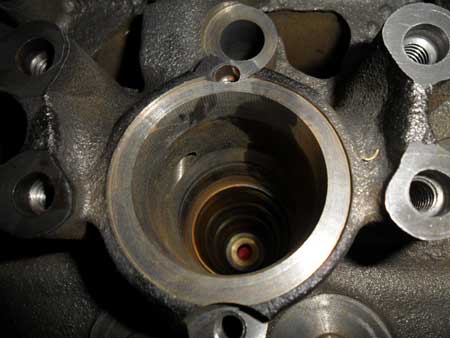
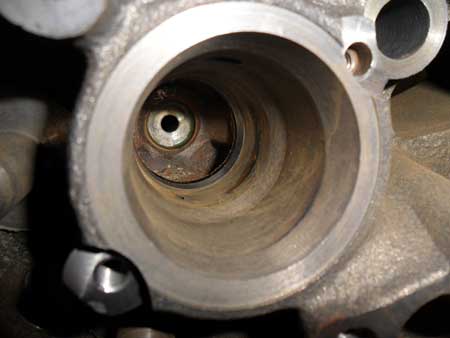
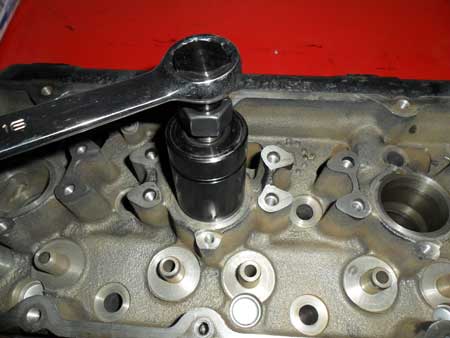
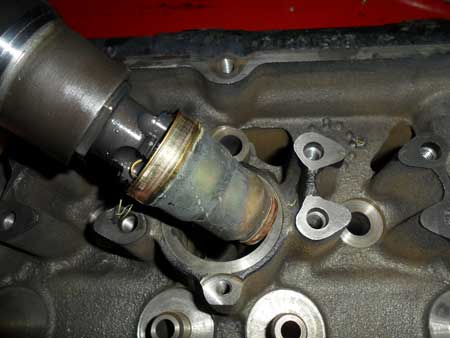
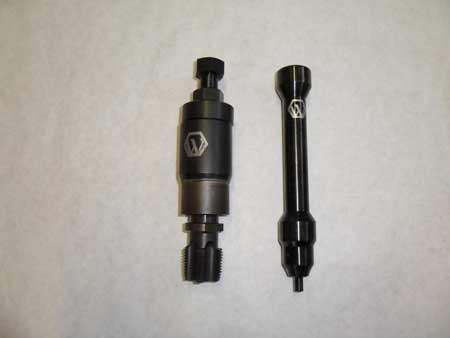
McDonald owns New South Diesel in Newton, NC.













